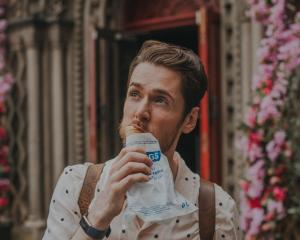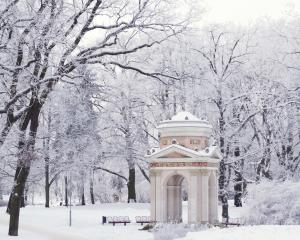
Sri Lanka has loomed large on my bucket-list for quite some time. I’ve just ventured to the teardrop-shaped island nation — nicknamed the Pearl of the Indian Ocean — for the first time, and it smashed my expectations. Over the course of a week, I savoured Sri Lanka’s colourful cities, vibrant cuisine, ravishing landscapes, astonishing World Heritage treasures and glorious wildlife. It was the latter that left me goggle-eyed in wonder.
After sampling the city buzz of Colombo, we drove east for several hours to Dambulla, home to the spectacular Dambulla Rock Temple. Sri Lanka has a long history of the presence and practice of Buddhism, and this sprawling cave complex is quite the treasure-chest. The Dambulla temple is not only one of the oldest sites for Buddhist monasticism, but it has served as a pilgrimage site for 22 centuries. The massive cave temple complex is unique in Southeast Asia because monks carved the caves out from rock, towering 160 metres above the surrounding plains. There are more than 80 caves across the site, but the major attractions are spread over five caves which contain statues and paintings of Buddha and his life.
They’ve been in continuous use for over 2000 years and the five caves huddle under a vast overhanging rock, carved with a drip line to keep the interiors dry. Progressively enhanced over the centuries by a multitude of kings, the temple complex remains the best-preserved ancient edifice in Sri Lanka. There are over 150 Buddha statues, hewn out of the rock, throughout the caves, including the 14m-long reclining Buddha. Hindu deities are also represented. One cave has over 1500 paintings of Buddha covering the ceiling, which flawlessly follow the contours of the rock. The sheer magnitude and intricacy of the craftsmanship is enthralling. If you’re visiting at twilight, the fading light attracts hundreds of swooping swallows to the caves’ entrance, which temporarily disrupted my Zen-like state!



As much as I enjoyed admiring the antiquities of this lost city, I was constantly distracted by the hordes of primates. So was Disney. Celebrated in Disney’s Monkey Kingdom movie, Polonnaruwa is home to a flourishing monkey population, living among the impressively preserved ruins. It’s the best place in the country to get up close with Sri Lanka’s three diurnal primates: the purple-faced leaf monkey, the toque macaque and the absurdly delightful tufted grey langur. They are all full of mischief, fearless and know how to work a room. The Smithsonian Primate Research Centre has helped make this site a conservation sanctuary for these cartoonishly beguiling creatures.
But before sweetly surrendering to more wildlife spectacles, there was another blockbuster ancient rock kingdom to explore. The shortest-lived but the most extraordinary of all Sri Lanka’s ancient capitals, Sigiriya Rock is a blow-your-hair-back experience. Better known as Lion Rock, this massive monolithic column of granite rock and its flat-top summit thrusts 200m high from the earth. It was turned into an ancient rock fortress 1500 years ago by King Kashyapa, who chose Sigiriya as the site of his new capital. It’s staggering to reflect on how such grand-scale engineering and design works were achieved, so long ago. He decorated the rock walls with 500 frescoes, and built a pleasure palace, accessible only through the mouth of a massive carved lion, with its head crouched between his paws. How very James Bond! Sadly, the lion’s head has been lost to the passage of time.



For a complete change of scenery, I enjoyed a spectacular stay at Udawalawe National Park. This revered national park is one of the best places to see the Sri Lankan elephant, the biggest of all the Asian elephants. There are roughly 600 elephants here, in herds of up to 50. We took a captivating late afternoon safari ride, zipping down the red dusty roads of the parkland to marvel at the wildlife. I was staggered to learn that the average Sri Lankan elephant guzzles down 200 litres of water a day!

I bedded down at the Grand Udawalawe Safari Resort, next to the national park. The artfully designed and spacious rooms featured beautiful hardwood flooring and sublime artworks depicting the wildlife of Udawalawe. It’s a popular spot for touring cricketers — including the Black Caps,whose previous stays are memorialised with giant signed cricket bats.
The lagoon-style outdoor pool was just the antidote to the deal to the heat of day. As was the case across all our hotels, the lavish buffet breakfasts featured a tantalising array of local curries. Kukul mas curry (chicken curry), parippu (dhal curry) and polos (green jackfruit curry) were my favourites. I am adamant that a belly full of curry is a surefire way to make your body more resilient to the rising mercury! The increase in your body temperature from eating spicy food makes you feel cooler by reducing the difference between you and the surrounding air. That in turn, induces sweat, helping to cool the body down when the perspiration evaporates. It works a trick!












